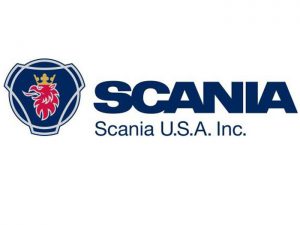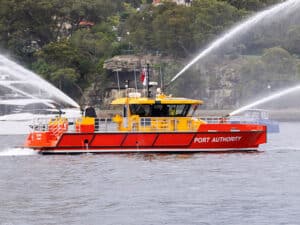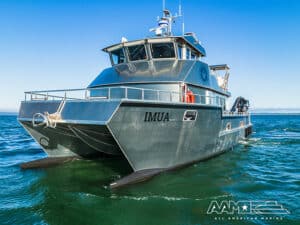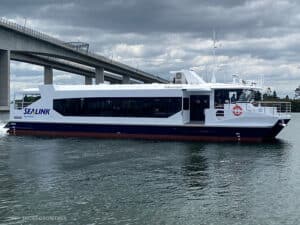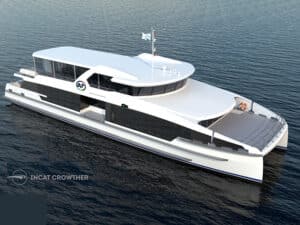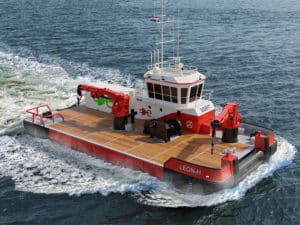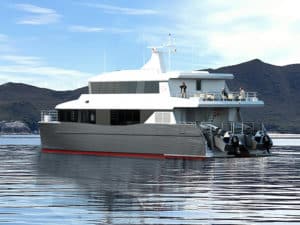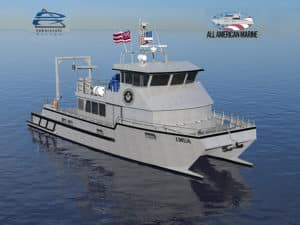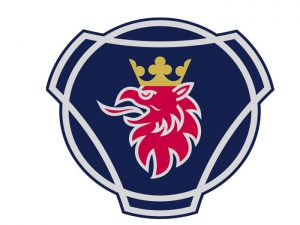
Scania showcases Tier 3 line up at Workboat Show
Scania engines are all based on Scania’s new state-of-the- art modular engine platform, which is used for marine, industrial, power generation, truck and bus applications worldwide.The engines build on a long tradition of extremely compact power packs that share both technology and architecture with Scania’s truck and bus engines. This makes for easy installation and exceptional performance.
Scania V8 engines are engineered to produce high power, while maintaining a size that is compatible for auxiliary equipment. The V design reduces the overall length of the engine and ancillaries can be effectively accommodated inside the footprint of the engine.
The output ratings for Scania’s newest Tier 3 version of the 16-liter marine propulsion engine ranges from 550 – 900 hp, with outputs between 550 – 1,000 hp available for use in international and exempt markets.
For auxiliary applications, the range for EPA Tier 3 is 468 kW – 553 kW, and the current range will continue to be offered between 430 kW – 596 kW for international and exempt markets. Scania also expects to see an increase in the output ratings of V8 engines used for keel cooled applications.
The output ratings for Scania’s newest Tier 3 version of the 13-liter inline marine propulsion engine range from 250 – 675 hp, with outputs up to 750 hp available for use in international and exempt markets. For auxiliary applications the range for EPA Tier 3 is 269 kW – 426 kW.
Key characteristics of Scania’s marine engine range
- Enhanced environmental performance and consistently improved fuel economy
- Traditional easy-to-service Scania architecture with individual cylinder heads
- Modular design across the range facilitates a reduction of parts supply and servicing
- Scania engine management system – performance can be tailored to each task
- Type approved
Scania’s centrifugal oil cleaner effectively removes small particles from the lubrication oil, while reducing the size of the replaceable filter cartridge. The Scania saver ring, placed at the top of each cylinder liner, reduces carbon deposits on the edge of the piston crown and reduces cylinder liner wear.
In spite of higher performance and tighter emission levels, Scania has been able to increase maintenance and oil change intervals by 25% (now 500 hours) in comparison to its predecessor.
Scania also offers a type-approved instrumentation that facilitates installation. Via a user-friendly and flexible web interface, the marine operator can adapt the information on the displays and choose any required data to be shown. There are prepared layouts for water temperature, engine speed, oil pressure and fuel consumption.
Scania provides professional guidance, specifications and support during the entire building and installation process. Its service network offers dedicated support to ensure the highest customer adapted quality.
Most repairs and servicing can be carried out by a single service technician, since each cylinder has its own head, which together with wet cylinder liners makes for easy overhauls in confined spaces. The camshaft is located high in the block and the timing gears are rear-mounted in order to increase the accuracy of engine timing and reduction of noise.

